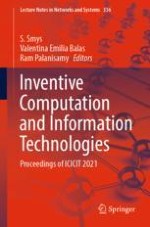2022 | OriginalPaper | Buchkapitel
Vision-Based Personal Face Emotional Recognition Approach Using Machine Learning and Tree-Based Classifier
verfasst von : R. Sathya, R. Manivannan, K. Vaidehi
Erschienen in: Inventive Computation and Information Technologies
Verlag: Springer Nature Singapore
Aktivieren Sie unsere intelligente Suche, um passende Fachinhalte oder Patente zu finden.
Wählen Sie Textabschnitte aus um mit Künstlicher Intelligenz passenden Patente zu finden. powered by
Markieren Sie Textabschnitte, um KI-gestützt weitere passende Inhalte zu finden. powered by
